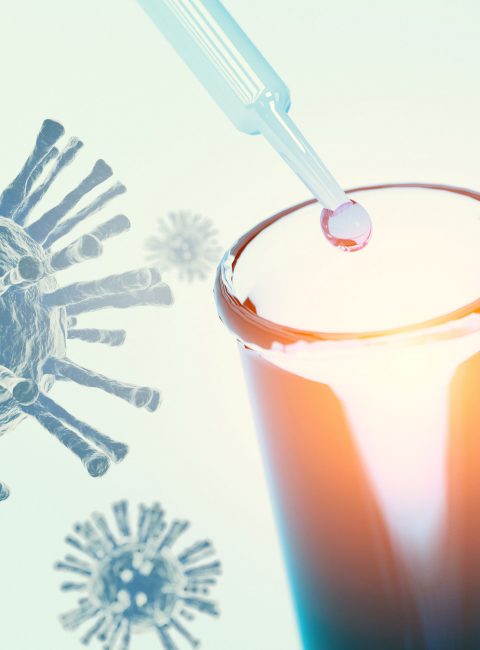 >
Spotlight March 2021: Is Nanotechnology the Swiss Army Knife against Future Pandemics?
>
Spotlight March 2021: Is Nanotechnology the Swiss Army Knife against Future Pandemics?
The COVID 19 outbreak has led to a fundamental rethinking of existing approaches to diagnosis, treatment, and prevention methods. The need for better and more efficient concepts is global and urgent. Nanotechnology has long been at the forefront of innovation and has led to advances in many different disciplines. Could this interdisciplinary field help develop a more comprehensive approach to combating COVID-19 as well as future pandemics?
This review published in the journal ACS NANO provides a general introduction to the novel coronavirus (SARS-CoV-2), the progression of the coronavirus disease 2019 (COVID-19) along with an overview of current vaccines. Additionally, some of the attempts to stop the first interaction of the virus with the target cells as well as preventing life-threatening processes are illustrated in detail. In this context, the interdisciplinary authors present and discuss several potential advantages of nanotechnology and the critical role it could have in the fight against COVID-19 and future pandemics both inside and outside the host. The authors highlight the multifunctional solutions offered by materials in the nanoscale e.g., by combining diagnostic and therapeutic into one. These nanotechnology-based-systems can increase the specificity and therefore the efficiency of immunosuppressant delivery to targeted cells resulting in a reduction of drug dose and drug distribution to nontarget organs. The authors also explain in detail the multiple ways, nanomaterials can assist vaccines or immunization research for example by boosting the upregulation required by the immune system or redirecting the immune response against antigens. Nanotechnology may similarly offer pathways to slow the spread of COVID-19; in this review, the development of self-disinfecting surfaces that would avoid contamination at hospitals or homes is also presented. Finally, to highlight the multifunctionality of nanomaterials, the authors examine how nanotechnology-based solutions could increase the safety of air-filtering devices such as masks.
Those interested in a more detailed description of emerging nanoscale materials or examples can read them in the original publication:
Weiss, C., Carriere, M., Fusco, L., Capua, I., Regla-Nava, J.A., Pasquali, M., Scott, J.A., Vitale, F., Unal, M.A., Mattevi, C. and Bedognetti, D., 2020. Toward nanotechnology-enabled approaches against the COVID-19 pandemic. ACS nano, 14(6), pp.6383-6406. DOI: 10.1021/acsnano.0c03697

Weitere Spotlights
Spotlight October 2022: The titanium dioxide debate – why the current ECHA and EFSA hazard classification should be questioned
Due to various reports and scientific studies, titanium dioxide (TiO2)was also banned in Europe this year (2022) for use as a food additive with the indication that it could possibly be carcinogenic to humans. Although no case of tumour induction in humans has been reported since the use of this material in micro but also […]
Read moreSpotlight January 2022: Methods, models, mechanisms and metadata
For the new year, we are presenting no “classic” paper here, but would like to point out an editorial: Methods, Models, Mechanisms and Metadata: Introduction to the Nanotoxicology Collection at F1000 Research. This editorial introduces the F1000Research Nanotoxicology Collection, where best practices can be collected in the form of original research reports, including no-effect studies, […]
Read moreSpotlight June 2021: Endotoxin – the reason for false-positive toxicity testing for advanced materials?
Advanced materials, but also nanomaterials are closely examined to determine whether they trigger biological effects that could be harmful to humans and the environment before they are used in products. This also includes such materials as titanium dioxide, which has been used in a wide variety of products for more than 50 years. A particularly […]
Read moreSpotlight September 2023: Fishing for raw materials with proteins
The so-called rare earth elements such as neodymium, dysprosium or cerium are elements that are of great importance for the energy transition; among others they serve as components of magnets in generators for electric power generation, act as luminescent materials in energy-saving lamps or as part of the car exhaust catalytic converter. The global production […]
Read more


